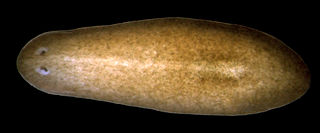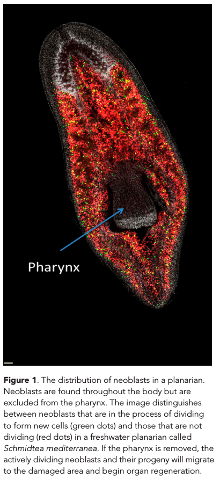-
February 01, 2016
Goodbye! -
January 18, 2016
A Fungus-farming Bee -
January 04, 2016
When The Going Gets Tough, The Tough Become Babies -
December 21, 2015
Adapting to a Cheesy Lifestyle -
December 07, 2015
Are GMO Fish Safe for the Environment? -
November 16, 2015
Divide and conquer: coaxing cheaters to battle ... -
November 02, 2015
Body Armor is Not Always for Protection -
October 19, 2015
Pre-adapting to Evolve -
October 05, 2015
How Fungus Makes Ant Zombies -
September 28, 2015
Learning from Lice -
September 21, 2015
An Incredibly Complete Tree of (Part of) Life -
September 14, 2015
Humans Evolved to Enjoy Songs and Music -
September 07, 2015
Dogs Have Co-opted Our Physiology to Win Our He... -
August 31, 2015
A Life of Ice and Clouds -
August 24, 2015
Evolving by Alternative Splicing -
August 17, 2015
Of Moss and Microarthropods -
August 10, 2015
The origins of kin discrimination—telling... -
August 03, 2015
Cooperating for Selfish Reasons -
July 27, 2015
Tinkering with Fins -
July 20, 2015
How We Know the Colors of Prehistoric Animals -
July 13, 2015
An Introduction to Sexual Selection -
July 06, 2015
Song Battles With Other Species Can Change Your... -
June 29, 2015
Was the Jurassic World a Dinosaur's World? -
June 22, 2015
The Evolution of Suicidal Sex -
June 15, 2015
Warning Signals Evolved From Other Functions -
June 08, 2015
Jumping Jaws Help Ants Escape From Pit Monster -
June 01, 2015
Mind-Manipulating Slave-Making Ants! -
May 25, 2015
Shape Matters for Gene Expression -
May 18, 2015
How Dogs and Humans Grew Together -
May 11, 2015
A Dinosaur That Flew on Bat-like Wings -
May 04, 2015
Counting Chicks -
April 27, 2015
A Groovy Cervix Helps Sperm Swim -
April 20, 2015
What Drove the Great Dying? -
April 13, 2015
The pan-genome of Emiliania huxleyi -
April 06, 2015
Behavioral Transplants -
March 30, 2015
Drug resistance evolves in inbred parasites -
March 23, 2015
What did the earliest skulls on land look like? -
March 16, 2015
The Oldest Jewelry in Europe -
March 09, 2015
The Evolution of Human Cortical Development -
March 02, 2015
Choosing Mates Wisely Is All The More Important... -
February 23, 2015
Evolutionary Constraints from Regulatory Gene N... -
February 16, 2015
Tracking Down the Genes Behind Speciation -
February 09, 2015
Duelling Genitals -
February 02, 2015
Melatonin is Not a Magic Pill -
January 26, 2015
What Snakes Teach Us About the Mouse Body Plan -
January 19, 2015
For bone-eating worms, smaller is better -
January 12, 2015
Collective Personality and Our Environment -
December 22, 2014
The Bone-house Wasp -
December 15, 2014
How and When Did Humans Start Consuming Alcohol? -
December 08, 2014
Why Do Mosquitoes Bite Humans? -
December 01, 2014
Crocodilians Hunt With Tools! -
November 24, 2014
What Makes a Cat? -
November 17, 2014
Treehoppers have wings on their heads -
November 10, 2014
The Meaning of Fitness -
November 03, 2014
The Evolution of War and Peace -
October 27, 2014
The Giant Kangaroos That Didn't Hop -
October 20, 2014
What Do Whales Taste? -
October 13, 2014
The Plants That Died with the Dinosaurs -
October 06, 2014
Scientists Discover Mushroom-like Animals, Poss... -
September 29, 2014
Island Biogeography in the Era of Humans -
September 22, 2014
From chimps to chickens: how a little DNA can m... -
September 15, 2014
How Wolbachia Learned to Help Bedbugs -
September 08, 2014
How Some Critters Evolved to Eat Poison -
September 01, 2014
How Starvation Causes Heritable Changes -
August 25, 2014
The Need for Speed Constrains Evolution in Mammals -
August 18, 2014
How Tibetans' Ancestors Adapted to High Altitudes -
August 11, 2014
Horizontal Gene Transfer Promotes Altruism -
August 04, 2014
Does Biology Have Laws? -
July 28, 2014
The Language of DNA -
July 21, 2014
Friends Are Genetically Similar -
July 14, 2014
Of Mice & Microbiomes: Evolving Gut Bacteria in... -
July 07, 2014
The give-and-take between mothers and their off... -
June 30, 2014
The First Animal Reefs -
June 23, 2014
Spiders Hunt Fish! -
May 23, 2014
One Year On! -
May 19, 2014
Evolving Separate Tasks — How Somatic and... -
May 12, 2014
Evolutionary Biologists Should Study Female Gen... -
May 05, 2014
Reservoirs for Retrovirus Evolution -
April 28, 2014
The Viruses That Made Us -
April 21, 2014
Unravelling How Planaria Regenerate -
April 14, 2014
The Yeasts That Make Lager -
April 07, 2014
Speciation in Reverse -
March 31, 2014
Fossils of Early Stick Insects -
March 24, 2014
The Evolution of Body Plans: A TALE of two prot... -
March 17, 2014
Where Do Genes Come From? -
March 10, 2014
The Evolution of Adipose Fins -
March 03, 2014
Invasion of the Crazy Ants -
February 24, 2014
Evolution and Development of Leaf Shape -
February 17, 2014
How Limbs Evolved From Fins -
February 10, 2014
Dogs are not Domesticated Wolves -
February 03, 2014
Sex and sociality: the genetics of being different -
January 27, 2014
Why is there so much plant diversity in a tropi... -
January 20, 2014
We Are Each A Community -
January 13, 2014
A Balancing Act for Wolbachia -
January 06, 2014
The Secrets of the Snake Genome -
December 30, 2013
Metabolism and Body Size Influence the Percepti... -
December 23, 2013
How the Cavefish Lost its Eyes -
December 16, 2013
The Regulation of Recombination -
December 09, 2013
Personality and the Spread of Disease -
December 02, 2013
The Genetics of Speciation -
November 25, 2013
The Making of Sex Chromosomes -
November 18, 2013
What Cetaceans Can Teach Us About Cultural Evol... -
November 11, 2013
Suicidal Reproduction In Mammals -
November 04, 2013
These feet were made for walking, but what abou... -
October 28, 2013
The Mimic Octopus: Master of Disguise -
October 21, 2013
Constraints on Evolution -
October 14, 2013
Selfish Genes & Emergent Properties -
October 07, 2013
Honeybees Can Avoid Deadlock When Making Group ... -
September 30, 2013
Epigenetics and Evolution -
September 23, 2013
Antibiotics and Applied Evolution -
September 16, 2013
Hiding in Plain Sight -
September 09, 2013
Tracking the Evolution of a Virus -
September 02, 2013
Viral Genes In Our Brain -
August 26, 2013
Some City Birds Are Changing Their Tune -
August 19, 2013
Shaping the Balance of the Sexes -
August 12, 2013
Forewarned is Fore-armed: Crickets Exposed to P... -
August 05, 2013
In the Evolution of a Signal, What Comes First:... -
July 29, 2013
Attraction gone wrong: butterfly mating and hab... -
July 22, 2013
How the Rhino Beetle Got its Horn -
July 15, 2013
The Laws of Attraction: Mangrove Killifish Style
« Prev « Prev Next » Next »
























